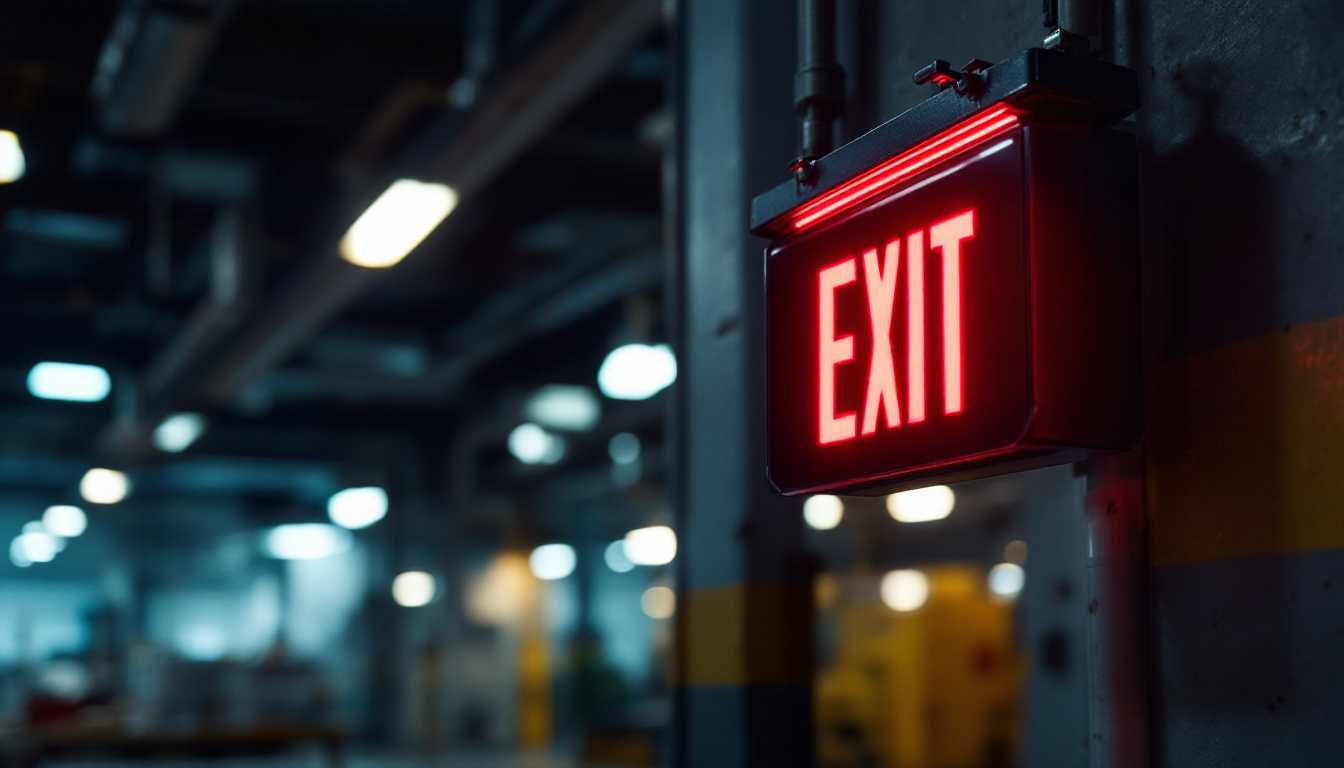
In an age where security is paramount, motion sensor security lighting has emerged as a crucial element in safeguarding homes and businesses. For lighting contractors, mastering this technology is essential not only for enhancing safety but also for providing clients with efficient and effective solutions. This article delves into the intricacies of motion sensor lighting, revealing industry secrets that can elevate a contractor’s service offerings.
Before diving into installation techniques and best practices, it’s vital to understand how motion sensor technology works. Motion sensors detect movement within a certain range and trigger the lighting system accordingly. This technology can be broken down into several types, each with its unique features and applications. Understanding these components not only aids in selecting the right sensor for your needs but also helps in optimizing the overall security system.
Motion sensors play a critical role in enhancing safety and security in both residential and commercial settings. By providing immediate illumination upon detecting movement, they deter potential intruders and enhance visibility for residents or employees. Furthermore, modern motion sensors can be integrated with smart home systems, allowing users to control their lighting remotely and receive alerts on their devices when motion is detected. This level of connectivity and control adds an additional layer of convenience and security, making motion sensors an increasingly popular choice for modern security solutions.
There are primarily three types of motion sensors used in security lighting: passive infrared (PIR), microwave, and dual technology sensors. Each type has its advantages and disadvantages, making them suitable for different environments. Understanding these distinctions can help you choose the most effective sensor for your specific application, whether it be for a home, office, or industrial site.
When selecting motion sensors for security lighting, several features should be considered:
Additionally, it’s worth noting that many modern motion sensors come equipped with features such as weather resistance, allowing them to function effectively in various environmental conditions. Some models even include built-in cameras or audio alerts, providing an extra layer of security and monitoring capabilities. As technology continues to evolve, the integration of motion sensors with other smart home devices is becoming increasingly common, enabling users to create a comprehensive and customizable security system tailored to their specific needs.
Proper installation is critical to maximizing the effectiveness of motion sensor security lighting. Here are some best practices that lighting contractors should follow:
Placement of motion sensors significantly impacts their performance. Sensors should be positioned to cover entry points, driveways, and dark corners of the property. It’s essential to avoid placing sensors near heat sources, such as air conditioning units or direct sunlight, as this can lead to false alarms.
For outdoor installations, consider mounting sensors at a height of 6 to 8 feet. This height allows for optimal detection while minimizing the chances of tampering. Additionally, ensure that the sensors have an unobstructed view of the area they are monitoring.
When installing wired motion sensor lights, proper wiring techniques are crucial. Use weatherproof connectors and ensure that all connections are secure to prevent water ingress. For installations in areas prone to moisture, such as near pools or gardens, using conduit can provide added protection.
In cases where wireless systems are preferred, ensure that the sensors are within range of the receiver. Conduct a signal test before finalizing the installation to ensure reliable communication between the sensor and the lighting system.
Beyond installation, there are several strategies that contractors can employ to enhance the efficiency of motion sensor security lighting systems.
With the rise of smart home technology, integrating motion sensor lights with smart systems can provide clients with enhanced control and monitoring capabilities. Smart motion sensors can be connected to home automation systems, allowing users to adjust settings remotely via smartphones or tablets.
Additionally, smart sensors can send alerts to homeowners when motion is detected, providing an added layer of security. Contractors should stay updated on the latest smart technology trends to offer clients the most advanced solutions.
Regular maintenance is essential for ensuring that motion sensor lighting systems function optimally. Contractors should recommend periodic checks to clients, including cleaning the sensors to remove dirt and debris that could obstruct their functionality.
Moreover, as technology evolves, upgrading older systems can enhance performance and efficiency. Contractors should educate clients about the benefits of upgrading to newer models that offer improved features, such as better sensitivity and energy efficiency.
While motion sensor security lighting offers numerous benefits, contractors may encounter challenges during installation and maintenance. Understanding these challenges and their solutions can help ensure a smooth process.
One of the most common issues with motion sensor lighting is false alarms. These can be triggered by pets, passing vehicles, or even tree branches swaying in the wind. To mitigate this, contractors should recommend sensors with adjustable sensitivity settings and advise clients on optimal placement.
Additionally, utilizing dual technology sensors can significantly reduce false alarms, as they require confirmation from both motion detection methods before activating the lights.
Power supply problems can hinder the functionality of motion sensor lights. Contractors should ensure that the electrical supply is adequate for the system being installed. For solar-powered systems, proper placement of solar panels is crucial to ensure they receive sufficient sunlight.
Regular checks on the power supply and battery levels (for battery-operated systems) can help prevent unexpected outages. Educating clients on the importance of maintaining power sources can also enhance system reliability.
Effective communication with clients is vital for ensuring they understand the benefits and functionality of their motion sensor lighting systems. Educating clients about how the technology works and how to use it can lead to higher satisfaction rates and fewer service calls.
During the installation process, take the time to demonstrate how the motion sensors work. Show clients how to adjust settings, test the range, and troubleshoot common issues. This hands-on approach can empower clients and give them confidence in their new system.
Providing a user manual or a quick reference guide can also be beneficial. Include information on maintenance tips, such as cleaning the sensors and checking power supplies regularly.
After installation, following up with clients can provide valuable insights into their experiences. Encourage feedback on the system’s performance and address any concerns they may have. This not only helps in building a strong client relationship but also allows contractors to improve their services based on real-world experiences.
The landscape of motion sensor security lighting is continually evolving, driven by advancements in technology and changing consumer needs. As a lighting contractor, staying ahead of these trends is essential for maintaining a competitive edge.
Emerging technologies such as artificial intelligence (AI) and machine learning are beginning to play a role in motion sensor lighting. These technologies can analyze patterns of movement and distinguish between benign and suspicious activity, further reducing false alarms and enhancing security.
Additionally, the integration of energy-efficient LED lighting with motion sensors is becoming increasingly common. LED lights not only provide better illumination but also consume less energy, making them a cost-effective choice for clients.
As sustainability becomes a priority for many consumers, contractors should consider offering eco-friendly options. Solar-powered motion sensor lights are an excellent choice for clients looking to reduce their carbon footprint while enhancing security.
Educating clients about the long-term benefits of sustainable lighting solutions can also position contractors as forward-thinking professionals in the industry.
Mastering motion sensor security lighting is essential for lighting contractors aiming to provide top-notch service and solutions to their clients. By understanding the technology, implementing best practices, addressing common challenges, and staying informed about emerging trends, contractors can enhance their offerings and ensure client satisfaction.
As security concerns continue to rise, the demand for effective motion sensor lighting solutions will only grow. Embracing these secrets and strategies will not only improve the quality of installations but also solidify a contractor’s reputation as a trusted expert in the field.
Ready to elevate your security lighting installations with the latest motion sensor technology? Look no further than LumenWholesale for all your lighting needs. Our spec-grade lighting products are designed to meet the highest industry standards, providing you with reliable and high-performance solutions for every project. Say goodbye to inflated markups and hello to unbeatable wholesale prices, free shipping, and the convenience of bulk buying. Don’t compromise on quality or value — discover the best wholesale lighting deals today and become the trusted expert your clients rely on.

Discover essential tips and expert advice for lighting contractors on selecting and installing LED exit signs.

Discover how four-foot LED light fixtures are transforming the lighting industry and impacting contractors’ profitability.

Discover the frequent pitfalls lighting contractors encounter with solar lamp post installations.

Discover the future of illumination with our comprehensive guide on lighting automation.